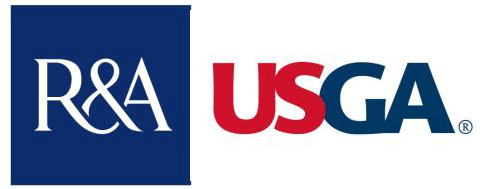
The R&A and the USGA have completed the annual review of driving distance in golf, producing a research report that documents and evaluates important findings from the 2017 season.
Introduced in 2015, the annual report examines driving distance data from seven of the major worldwide professional golf tours, based on nearly 300,000 drives per year. The data from studies of male and female amateur golfers is also included.
The 2015 and 2016 editions of the distance report presented the increases in driving distance since 2003 as a slow creep of around 0.2 yards per year. The 2017 data shows a deviation from this trend. The average distance gain across the seven worldwide tours was more than 3 yards since 2016.
As noted in previous annual reports, variability in driving distance of 4 or more yards from season to season on any one tour is not uncommon. However, this level of increase across so many tours in a single season is unusual and concerning and requires closer inspection and monitoring to fully understand the causes and effects.
As the review of this issue progresses, The R&A and the USGA remain committed to the spirit of the 2002 Joint Statement of Principles which recognise that distance impacts many aspects of golf and that any further significant increases in hitting distances at the highest level are undesirable.
Increases in distance can contribute to demands for longer, tougher and more resource-intensive golf courses at all levels of the game. These trends can impact the costs to operate golf courses and put additional pressures on golf courses in their local environmental landscape. The effect of increasing distance on the balance between skill and technology is also a key consideration. Maintaining this balance is paramount to preserving the integrity of golf.
Building on the extensive research we have undertaken in recent years, we will conduct a thoughtful conversation about the effects of distance prior to making any specific proposals. We remain open-minded and our absolute priority is to ensure that all key stakeholders are involved in an open and inclusive process and that we move forward together in the best interests of golf at all levels. There is no fixed timetable, but we will commence this process immediately and endeavor to reach a conclusion as promptly as possible.
In conjunction with the publication of the 2017 distance research report, The R&A and USGA are carrying out a comprehensive analysis of the impacts of increased distance on both the playing and overall health of golf.
The R&A and the USGA intend to consolidate previous work conducted by the two organisations, as well as others in the golf industry, regarding the effect of distance on the footprint and playing of the game, conduct new research on these same topics to augment the current state of knowledge of the issues, and, most importantly, in the coming months, engage with stakeholders throughout the golf industry to develop a comprehensive understanding of perspectives on distance. Additional information on this stakeholder engagement will be made available in due course.
Ultimately, The R&A and the USGA remain steadfastly committed to ensuring a sustainable and enjoyable future for golf. The 2017 Distance Report can be viewed by clicking on the following link: 2017 Distance Report.
Acushnet, TaylorMade dismisses distance claims
Following the R&A/USGA announcement, The Acushnet Compay (maker of the Titleist Golf Ball), released a statement, dismissing the claims of the distance report, citing key findings of their own:
“As a leader in the golf equipment industry, our team is conditioned to evaluate data to best understand contributing factors and root causes,” said David Maher, CEO and President of Acushnet Company. “It is with this intent that we analyzed the 2017 Distance Report, and our findings continue to support the fact that equipment regulations have been effective.
“A closer look into the numbers in the Report underscores the complexity of making any meaningful year-to-year comparisons,” continued Maher. “There were several contributing variables in 2017, including course selection and set-up, agronomical conditions and weather, which need to be considered when assessing the data.”
Below is a sampling of key findings from Acushnet’s research that impacted distance results in 2017:
• At the 33 PGA Tour events conducted at the same venue in 2016 and 2017, where data was collected, the average driving distance increased +0.5 yards. At the eight events held at new venues in 2017, the average distance increased +8.0 yards.
• Of these 33 PGA Tour events conducted at the same venue, 15 tournaments had a decline in average driving distance with one event flat to prior year. This highlights the year to year variability in distance.
• The major championships conducted at new venues represented one-third of the total average driving distance gained in 2017: U.S. Open (Erin Hills vs. Oakmont +20.4 yards), Open Championship (Royal Birkdale vs. Royal Troon +8.1 yards) and PGA Championship (Quail Hollow vs. Baltusrol +7.0 yards).
• The 2017 Masters average driving distance declined -0.4 yards.
• Of the 25 Web.com graduates in 2016, 24 had shorter average driving distance on the 2017 PGA Tour, with an average decrease of -6.6 yards. For the years 2015 to 2017, 74 of the 75 graduates had shorter average driving distance on the PGA Tour the following year. This can be attributed to course set-up.
“In any given year there are variables that impact distance, and any movement as in 2017 is not suddenly indicative of a harmful trend,” said Maher. “We continue to believe equipment innovation has benefitted golfers at all levels, and our analysis of the 2017 Distance Report affirms that the USGA and The R&A have effective regulations in place to ensure the game’s health and sustainability. We look forward to continued dialogue with the governing bodies and stakeholders as we seek to position the great game of golf for future success.”
In addition, TaylorMade issues a release of their own.
“We have meticulously reviewed the USGA and R&A’s 2017 Distance Report and discussed its findings with key stakeholders. Additionally, we have carefully considered the inferred implications that the study may have on the game moving forward. The TaylorMade Golf Company firmly opposes any potential roll back of product performance or bifurcation of the rules in any form as we believe these movements will be detrimental to the game at every level,” said David Abeles, CEO, TaylorMade Golf.
“We are optimistic about golf’s future and we believe that the growth initiatives our industry has invested in are beginning to drive participation momentum in our sport. Any separation from the rules or any step backward in performance would be disadvantageous to the growth of the game. For millions of golfers of all skill levels, we believe innovation and technology lead to better performance, and better performance brings more joy to the game for all who play it.”
“As the discussion around bifurcation and rollback formalizes, we look forward to having a seat at the table to lend our voice. Until then, we will continue to create the best performing products for all golfers.”




